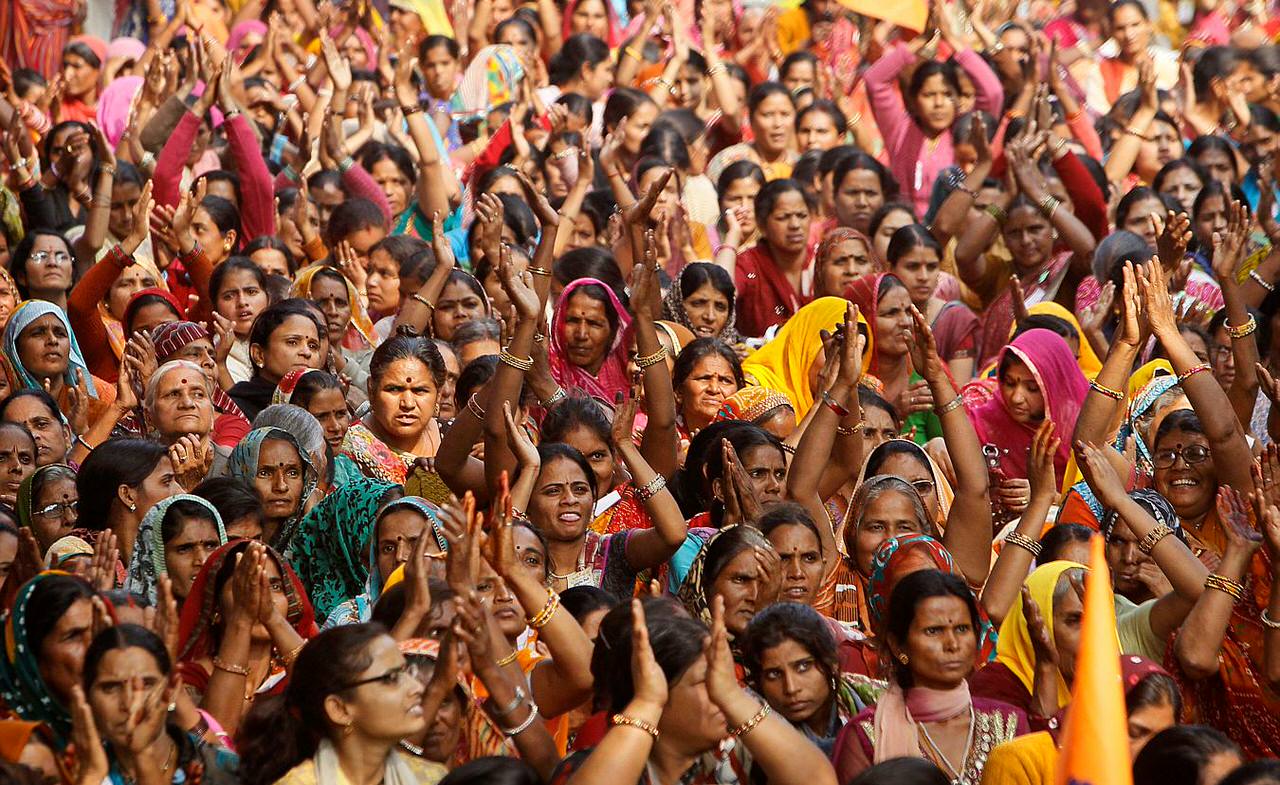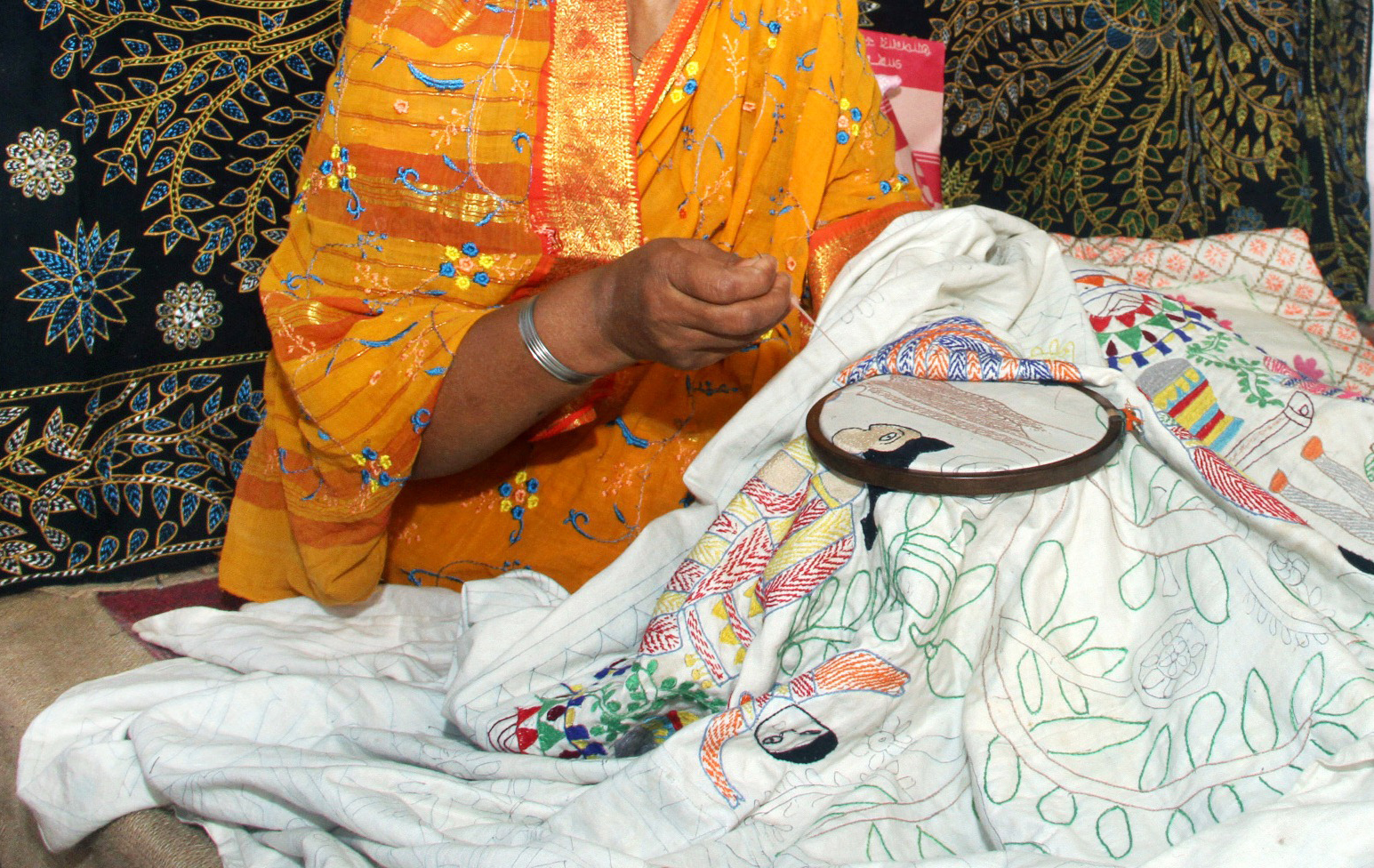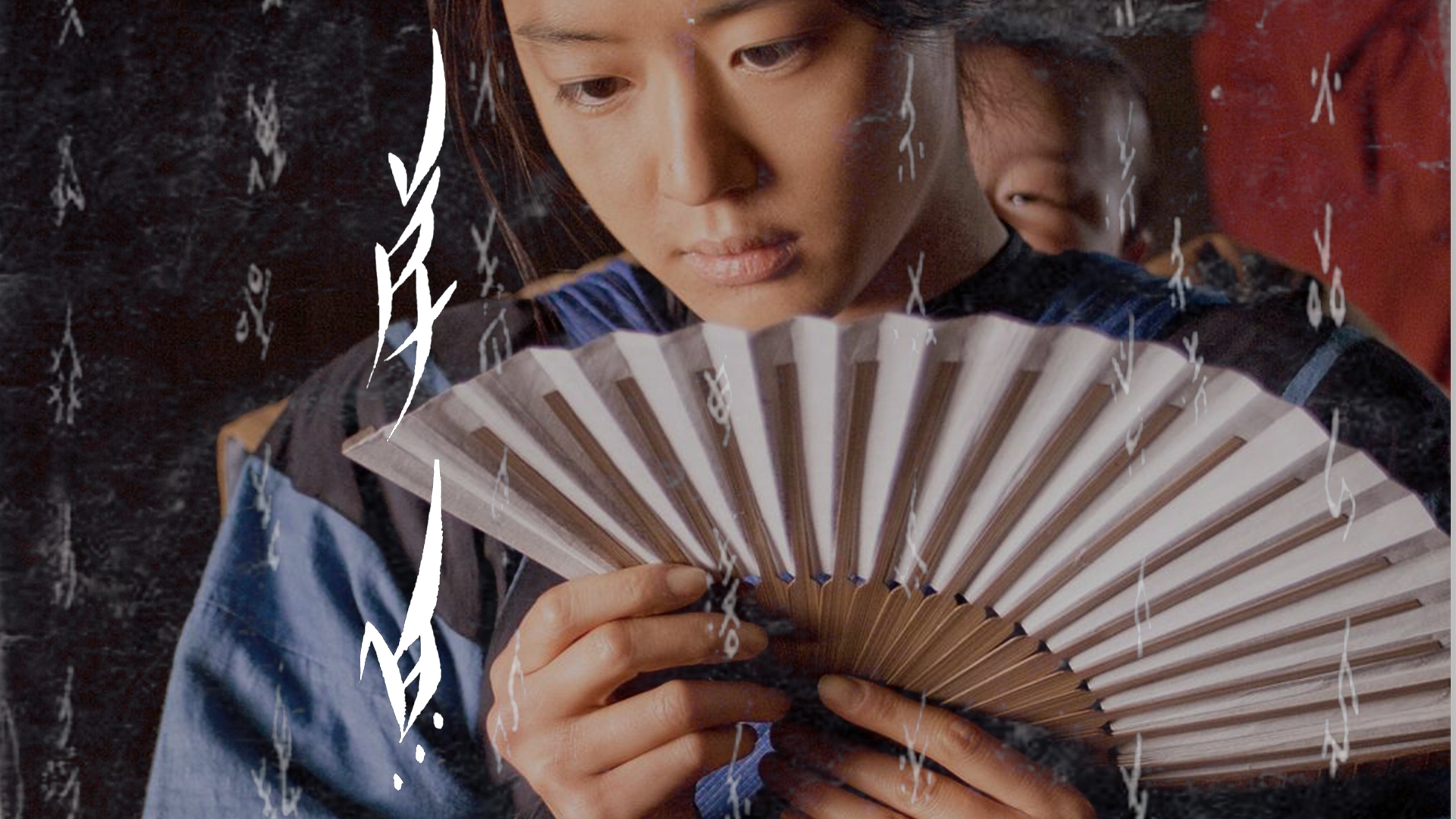This is a list of strikes and movements organised by women and/or workers in India to demand their right to equality and social justice.
1. Munnar Tea Plantation Workers
“We toil the whole day, you loot us”
In 2015, women working on tea plantations in Kerala, India went on strike to demand an increase in daily wages from approximately 230 Rupees to 500 Rupees. The women’s demands were minute when compared to the twelve hour work days they faced and the living conditions they were in. Their numbers grew quickly, which pressured their management to concede to their demands for bonuses. But this strike grew to embody more than just a wage dispute. It revealed the deep and rampant corruption that existed within plantation trade unions and challenged the patriarchal rule in unions. Men were not allowed to join the protests, nor were unions allowed to interfere. The Munnar strikes are feminist endeavor against corporations and corruption, a revolutionary and impressive feat
2. Women’s Protest After The Delhi Gang-Rape
“You are not going to tell us how to dress, when to step out at night, how to walk or how many escorts we need!”
In December 2012, a woman was gang-raped by six men in a bus in Delhi and her friend was beaten when he attempted to stop them. When she passed away from injuries sustained during the attack, thousands of women took to the streets of Delhi and other cities, demanding their right to public spaces, and questioning prevailing patriarchal and misogynistic views. Protesters in Delhi gathered at India Gate and marched to the Parliament. The movement did not lose momentum even when police officials responded to the demonstrations with violence. Instead, it only grew. It has inspired several individual and smaller movements as well.
3. Strikers in Sari (Grunwick dispute)
“They wanted to break us down, but we did not break.”
The Grunwick factory in London was made up largely of migrant women, mostly from South Asia. Jayaben Desai who worked at the factory launched a strike in August 1976 as response to the unfair firing of her son and the abysmal work conditions. Other workers joined her, protesting about workplace conditions and the right to unionize. Over 130 workers were subsequently fired. By June 1977, marches with over 20,000 participants were organised as British trade unions gave real support to Asian workers. Despite two years of demonstrations, the demands of protestors weren’t fulfilled, However, the strike challenged the stereotype of ‘docile’ South Asian women.
4. Chipko Movement
“What do the forests bear? Soil, water and pure air”
After the devastating floods of 1970 in Uttarakhand (then Uttar Pradesh), villagers in the sub-Himalayn districts were deeply concerned about deforestation and loss of cultivable land, leading to Chipko Movement gaining momentum. Women were especially at risk as they depended on the local forests for their own and their family’s livelihoods and wellbeing. With the help of activist Chandi Prasad Bhatt, women mobilized in large numbers across various villages. From Gaura Devi, who organized the women of Lata village, to women of Dongri Paintoli and Gopeshwar, there are many examples of this eco-feminist movement led by women in 1970s. Chipko Movement sparked similar protests in India in 1980s leading to a ban on cutting of all trees in the forests of Uttar Pradesh, Himachal Pradesh, Karnataka, Rajasthan, Bihar, Western Ghats and Vindhayas for 15 years.
5. Women’s Revolt in Bengal
“When the fighting took place women became more daring!”
Bengal’s Tebhaga movement of 1946 is regarded as a significant political movement emerging from an agrarian crisis. Sharecroppers demanded that two-thirds of the crop should remain with them as opposed to the British system to half of the harvest as rent, apart for other taxes levied on them. Women rose to voice their grievances to the same degree as men, and even further when the landless and peasant women formed their own fighting troops, called the “Nari Bahini.” The Nari Bahini played a pivotal role in the Tebhaga movement and actively fought against state repression. Their participation in active combat challenged the traditional roles that had been in place. In areas where women had not been allowed to even work in fields, they now found themselves on the front line, fighting patriarchal institutions.
6. Quit India Movement
“When the history of India’s fight for independence comes to be written, the sacrifice made by the women of India will occupy the foremost place.”
When Gandhi and his supporters were imprisoned for civil disobedience in August 1942, hundreds of women nationalists filled the void created and led demonstrations, held public lectures, and made and delivered explosives. Women were driven to mobilize and participate in the Quit India Movement. Usha Mehta, Aruna Asaf Ali, and Sucheta Kripalani are recognized as some of the main leaders of the Quit India Movement.
Neha Gupta works as an Information and Communications officer with Asia Pacific Forum on Women, Law and Development (APWLD). As a former journalist, she has written for media organisations in Japan, UK, Pakistan and India with a special focus on gender equality and women’s human rights. She can be reached at neha@apwld.org or @_Neha_G on Twitter.
Disclaimer: This is by no means a comprehensive list and we look forward to your suggestions to do a Part 2 of this list in the comments section below.





Please include Channar Revolt as well as the Martyrdom of Nangeli (Both are separate incidents) to the list.